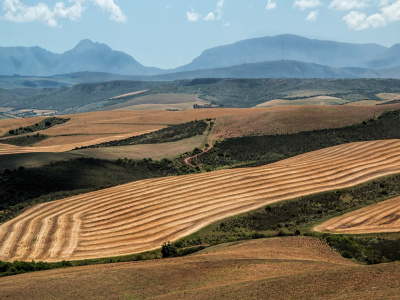
10 reasons why 2014 is the Year of Family Farming
Family farming is a central piece of the agenda for African transformation. Declared the United Nations (UN) Year of Family Farming and the African Union (AU) Year of Food Security, 2014 will be particularly interesting, with key challenges for family farming in terms of policy directions, international processes and efforts on the ground.
Ten reasons why:
1) The UN sheds its light on family farming
To achieve a pro-family farming environment tailored to local conditions, the UN aims to reposition family farmers at the center of agricultural, environmental and social policies in national agendas. The 2014 Year of Family Farming will be an opportunity to promote this aim to the forefront of the international development agenda.
2) CAADP just blew out 10 candles
Last November, the Comprehensive Africa Agriculture Development Programme (CAADP) reached its 10th Anniversary. CAADP has achieved increased awareness about the centrality of agriculture for African growth. Since its creation, annual agricultural GDP grew on average by nearly 4%. However, public financing of CAADP’s national investment programmes and private sector-led activities are still insufficient.
3) The African Union puts food security on a pedestal
It is crucial to sustain the momentum achieved by a decade of the CAADP process. It is in this context that the AU chose 2014 as the Year of Agriculture and Food Security. Its aim is to continue the fight against hunger and poverty, since they are still persistent challenges in many African regions. The Africa Year of Agriculture and Food Security will be commemorated across Africa, in Member States, Regional Economic Communities (RECs), Continental organisations and of course, at the AU Headquarters in Addis Ababa, Ethiopia. It will be a year that gives opportunities to communities, state and non-state actors in Africa to express on what works in agriculture. This process will assist in setting the agenda for the years to come.
4) Farmers from the South, farmers from the North: everyone’s needs are the same
Regional dialogues with family farmers, taking place in preparation for the UN Year of Family Farming, show that their needs are similar across the world: technical assistance and policies that build on their knowledge, appropriate technologies, strengthening of producers’ organisations and cooperatives, and improved access to land, water, credit and markets.
5) More and more barriers to the farmer’s survival
A long laundry-list of impediments to the farmer’s life and work, naming a few: actual crop yields are often well below the yield potential of modern varieties, the so-called “yield gap”; and, access to water remains limited in many drought-stricken areas, but the reference to “water” is limited in CAADP. Other key obstacles are insufficiently developed rural infrastructure and commercial linkages between farmers (mainly for smallholders) and consumers.
6) David vs. Goliath, or small-scale farmers vs. industrial farms
African governments as well as donor countries are increasingly convinced that smallholder farmers have a role to play in the continent’s social and economic revival. They constitute over 90 % of all people active in the agricultural sector in Africa. Yet, rapid gains from industrial mono-cropping agriculture leads to entire areas where smallholder farmers end up as wage workers on their own environmentally degrading land. However, there is a space between these two cases, where modern, commercial farming is based on family farming patterns and uses socially and environmentally sustainable farming practices.
7) Where are the evidence-based policies?
Some say that Africa does not lack resources, nor seeds, fertilisers or other forms of technologies. What Africa lacks in the first place are evidence-based policies and credible institutions to deliver better services. CAADP has been trying to put this in place so far. With mixed levels of success.
8) Give women the power!
More attention should go to mainstreaming gender: women play a major role as main contributors to food security in their communities. Most people in the world are fed by smallholder farmers, and these are women. The challenge remains to create concrete alternative development programmes that confirm land and other resource rights in the hands of local farming families, especially the women in these family.
9) Lessons learned from Europe
More money, more experience, more expertise, more technology: Europe can help in paving the route towards more success in Africa. Just like in Africa, family farmers are the backbone of agriculture in the EU and a wide range of policy measures has been pursued to support them. Europe’s agricultural success is based on a family farm model where the key ingredients are well-functioning output and input markets, ready access to new technology supported by close contact with research and extension services, and well trained farmers.
10) 2014, the base year for the next decade
The next ten years should build on the momentum, achieved so far through CAADP. We should further mobilise concrete sustainable investments for the priorities identified in the past ten years. Family farmers are part of 70 % of the world’s food insecure population that lives in rural areas of developing countries. With adequate support, they could be a solution to hunger. This year’s strong international attention should pave the way toward food security. In doing so, family farmers could become key achievers in the post-2015 debate.
For more details on the UN Year of Family Farming, the AU year of Food Security and the CAADP process, refer to the December 2013 issue of GREAT Insights.
The views expressed here are those of the author, and may not necessarily represent those of ECDPM.

